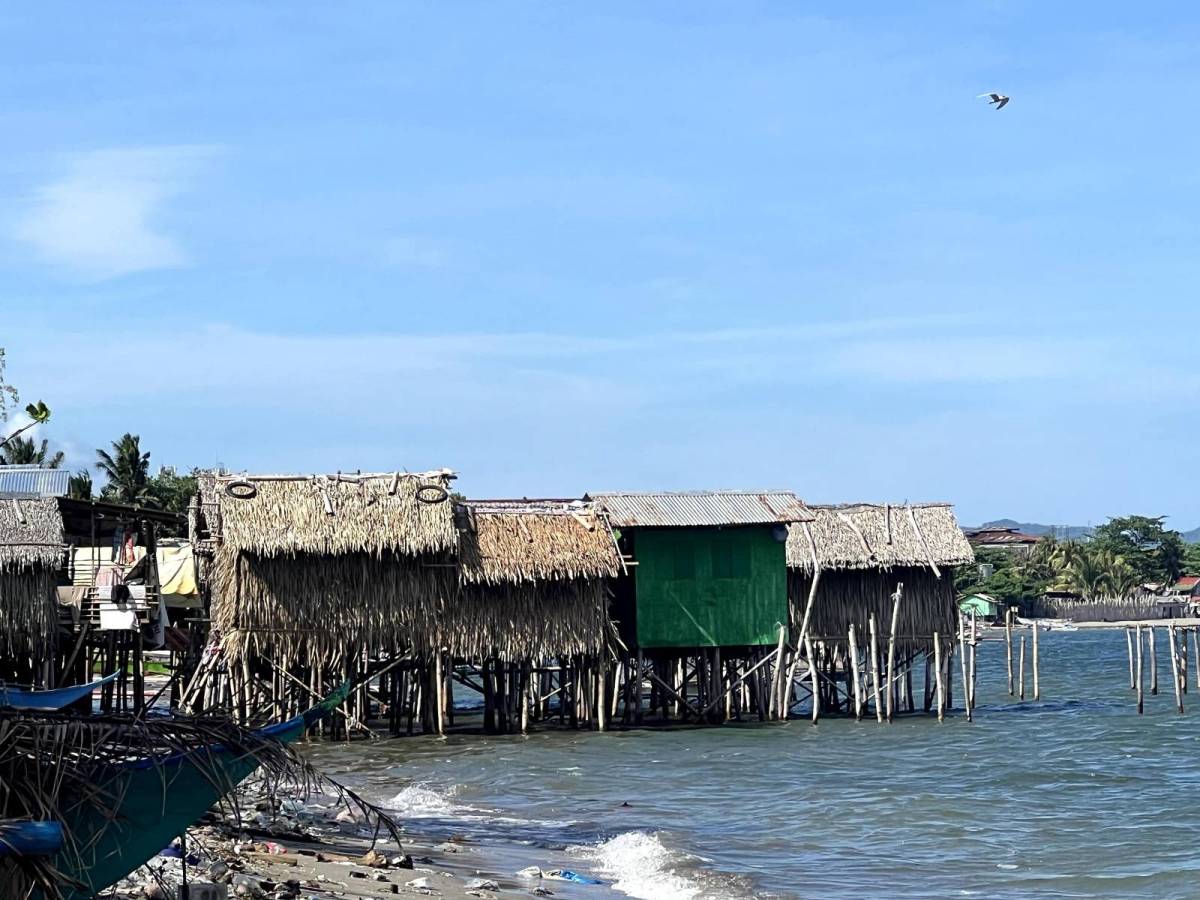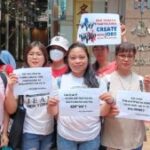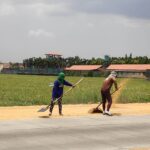
By PRINCESS CATHERINE L. PABELLANO
Bulatlat.com
LUCENA, Quezon – It was a hot Monday afternoon yet Reymark Namli, 11, and Basil Balmes, 10, both Badjao, still wore big smiles on their faces. They were barefooted as they walked along Quezon Avenue, Lucena City, tapping their makeshift drum to a beat.
“The jeepney drivers usually get mad at us for hitching, but some would allow us to hitch. Basil is in charge of handing envelopes to the passengers while I play music using my tambol. Then, I would sing to entertain them,” Reymark told Bulatlat in an interview.
The usually busy Quezon Avenue has been a home to both the boys every weekend. They would hitch a ride with a jeepney from their community in Dalahican to reach the town proper of the city.
Read: The Badjaos: Cast Away From Mindanao To Manila
Badjao, also known as “sea gypsies,” are indigenous people from the islands of Mindanao. They are known to have a rich maritime heritage. Historically, they have traversed the water of Sulu and lived nomadically. However, the long-running armed conflict in Mindanao has displaced them, forcing them to migrate to urban areas like Lucena City.
“We use the money for our school expenses. We use it to buy food for recess. Our parents have no money to give us, so we have to beg. It is not bad, we are not stealing.” Reymark said in Filipino.
Quest for a peaceful life
Along the shore of Talao-Talao in Brgy. Dalahican, stilt houses made of bamboo, plywood, and galvanized iron lined up. The houses are elevated above the ground on sturdy wooden stilts or posts. This provides protection against flooding.
The Badjao arrived in Lucena City in 1994 and started forming a community in the villages of Dalahican and Barra. According to the City Social Welfare and Development Office (CSWDO), currently, there are 91 families in Dalahican and 66 families living in Barra.
Marilena Jordan, 26, said their family has been living in Lucena City for five years and that they plan to stay here longer because they feel safe. They came from Zamboanga del Sur aboard a ship. Others took roll-on roll-off ships to reach Luzon.
“We escaped from Zamboanga. Life there was good but there were members of Abu Sayyaf who killed our fathers, brothers, and husbands. We just chose to leave our homes,” she said.
They initially lived in Batangas. But Jordan said they were branded as thieves. “We decided to move to Lucena City because according to some of our relatives who are living here it is peaceful here.”

Challenges of restarting life in a new city
Migrating to a new city proved to be difficult for the Badjao community.
In 2000, Juana Lali, 58, spent 500 pesos to board a ship from the port of Zamboanga. After arriving at the Batangas port, they looked for a community that would accept them.
Just like Marilena, Juana’s family initially settled in Batangas before taking a bus to Lucena City and joined the rest of the Badjao community who was already settled in the villages of Dalahican and Barra. They built a house along the shore of Talao-Talao and this was where she gave birth to her children.
“When we reached Lucena City, I thought it was going to be easy but I was wrong. Nobody wanted to employ us because we are uneducated. We cannot find jobs because we do not know how to read, write, and count,” said Juana.
To make a living, they sold jewelry, cellphone batteries, and thrift clothes. Juana’s husband, who lost his arms to a fishing accident back in Zamboanga, resorted to begging in the streets of Lucena.
They also faced constant discrimination in their attempts at integrating to the mainstream life of Lucena City. “I still work as a vendor. But when we do not have money for food, I go back to the street to beg. Life is really hard. Begging is the only means I see to feed my children without resorting to doing bad things such as stealing.”
In an effort to end their hardships, Juana strived to send her children and grandchildren to school. Her youngest child, Tin Lali, was able to finish elementary school at 17 years old. Still, she would join her mother in begging while singing in the streets.
“I know how to read, write, and count a little. I wanted to pursue high school and eventually work at a mall but I am afraid to study further. I think high school is difficult. I might not be able to cope with the projects and requirements,” Tin said.
Hopes for better future
Non-profit organizations have been collaborating with the local government of Lucena to uplift the lives of the Badjao through a community-based approach, where inclusion strategies are integrated in the planning and policy making.
“But I want a different future for my grandchildren. I am sending them now to school to study. I want them to learn how to read, write, and count so they will not end up like me,” said Marissa Quansa, 49.
One of her grandchildren is now a first grader in the Dalahican Elementary School.
Meanwhile, Jordan said that she intends to support her son until he finishes higher education. “And the day would come that he will no longer beg in the street.” (JJE, RVO) ![]()




